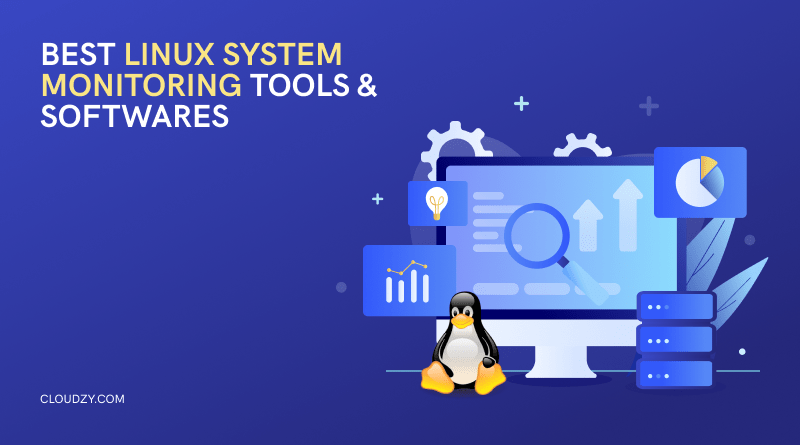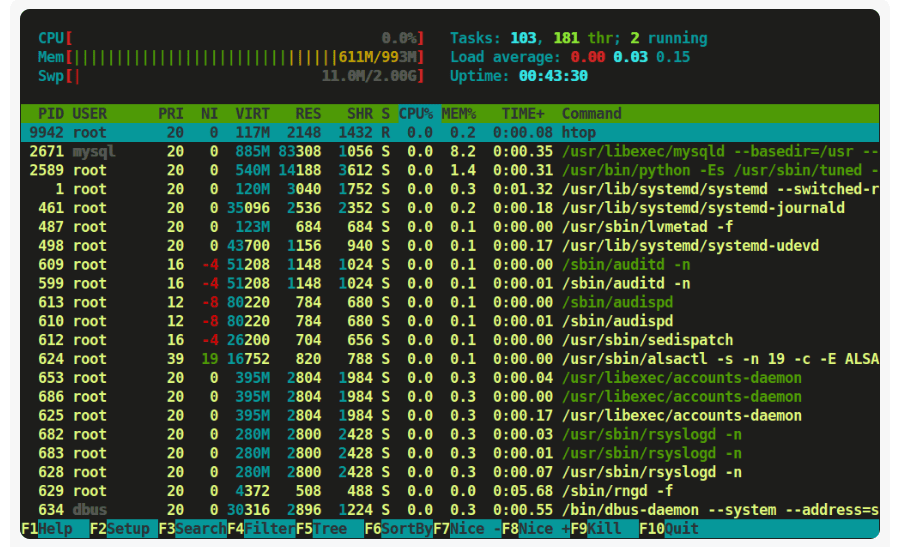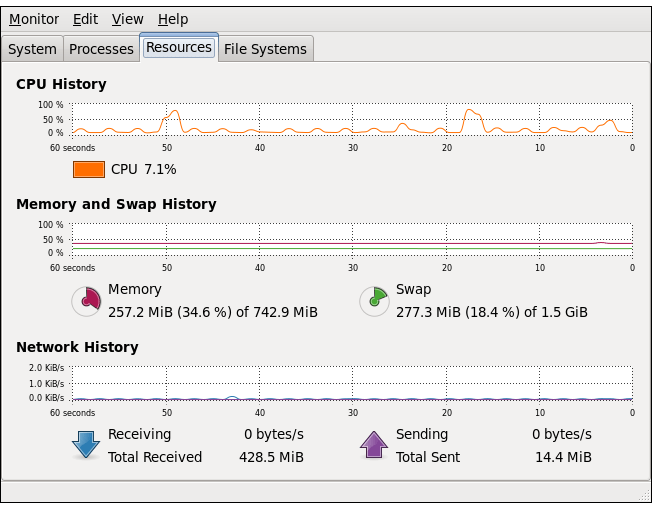- Best Linux System Monitoring Tools in 2023 👩🏾💻
- What is Linux System Monitor?
- Linux Resource Monitor
- How to Access Linux Resource Monitoring Tool
- Linux Server Monitor
- Linux Network Monitor
- Linux Performance Monitor
- Linux Bandwidth Monitoring
- Advantages of Different Linux System Monitor Tools
- Resource Monitoring Advantages
- Server Monitoring Advantages
- Network Monitoring Advantages
- Performance Monitoring Advantages
- Bandwidth Monitoring Advantages
- Top 10 Linux System Monitor Tools
- FAQ
- Do I need Linux system monitoring software?
- Which Linux system monitor tool is the most secure?
- Closed-source vs. open-source Linux system monitor; which is better?
- Linux system monitoring; why should you do it?
- What should be monitored in Linux systems?
Best Linux System Monitoring Tools in 2023 👩🏾💻
Whether we like it or not, systems are not impenetrable and certainly are not indestructible. Any system you use, either in your house or at work, should be monitored around a set schedule.
Monitoring software is similar to an alarm system you install in your house; it is continually working to warn you about rising threats just in the nick of time.
Even if you live in the safest neighborhood, installing an alarm system is still essential. Now, this doesn’t mean you believe something bad is going to happen; it just means you are taking the necessary precautions to avoid any life-threatening situations.
A Linux system monitor exists for the same purpose, to keep an eye on different parts of your system and notify you if something goes wrong.
It’s impractical for you to monitor your whole system every day to prevent any mishap; you will miss so much time and won’t get any work done. Thus, using system monitoring tools is the best alternative.
What is Linux System Monitor?
The Linux system monitor tools make sure that every system operation is working at its optimal level and that there are no server misbehaviors.
We want to go over Linux system monitor tools in five key areas:
- Linux Resource Monitoring
- Linux Server Monitoring
- Linux Network Monitoring
- Linux Performance Monitoring
- Linux Bandwidth Monitoring
Let’s discuss each monitoring tool to find out how they function and keep your Linux system up and running.
Linux Resource Monitor
The Linux resource monitor is in charge of checking the utilization of CPU, RAM, and hard drives to ensure there are no memory shortages or spikes in resource usage. You might think the system can allocate resources properly without problems, but resource outages happen all the time without you even noticing.
Misconfigurations and bugs can cause serious issues, but if you regularly check the Linux resource monitor reports, they can be detected and fixed in time.
How to Access Linux Resource Monitoring Tool
Linux has built-in commands to help you view resource usage across different times. The two most popular commands are top and htop .
top command; Execution & Output:
Open the Linux terminal window and type in the top and press Enter.
Here’s an example of the output results:
The meaning of each figure:
Up 3 min> The duration that the system has been running
1 user> Current number of system users
Load average: 1.21, 0.57, 0.22> Percentage of CPU load in the last one minute, five minutes, and fifteen minutes (This figure should be between 0 and 1.0)
221 total> The sum of the system processes
2 running> The number of processes that currently have CPU access
219 sleeping> The number of processes awaiting resources
0 stopped> The number of processes releasing resources
0 zombie: The number of processes resource released from their parent process
Cpu> the numbers are the percentage of time for each process:
ni> manually configured processes
st> virtual CPU time waiting to access physical CPU
Total> total installed memory
buff/cache> Buffered info waiting to be written
MiB Swap> Mebibyte Swap Partition
Free> available swap space
avail Me> cached info for future reads
htop command; Execution & Output:
Open the SSH terminal and type htop, and press Enter.
Here’s an example of the output results:
Load average> 0.00, 0.03, 0.15> Percentage of CPU load in the last one minute, five minutes, and fifteen minutes (This figure should be between 0 and 1.0)
Uptime> The duration that the system has been running
Memory usage color coding:
There is another way to check the Linux resource monitor tool in action. Follow the steps below:
Here’s an example of the output results:
Linux Server Monitor
Many users implement the top command as a Linux server monitoring tool, but if you want to get detailed statistics about your server, it’s best to use monitoring software such as Zabbix.
We will cover the features of this Linux monitoring tool in the following sections, but here is a sneak peek:
- Easy configuration
- Process-specific network metrics
- Real-time infrastructure monitoring
- Instant notifications about high resource consumption processes
Linux Network Monitor
A stable network connection is necessary for almost any organization, so a network monitoring tool is essential to detect any type of network issues before they cause server failures or damage other devices.
A Linux network monitor tool checks network components such as routers, switches, etc., while keeping an eye on network security. For example, if an unauthorized device or malware infiltrates your network, the Linux network monitor software detects and notifies you before they can cause problems.
Stay tuned for the benefits of using Linux network monitoring tools in the following sections.
Linux Performance Monitor
Performance monitoring is as important as server monitoring because it directly affects user experience, i.e., the money-making aspect of your business. A Linux performance monitor tool provides insight into each process’s duration, blocked processes, memory usage, system bottleneck, disk behavior, etc.
Linux Bandwidth Monitoring
Linux bandwidth monitoring goes hand in hand with performance and network monitoring. When you run a big company with more than 100 employees, you must keep a close eye on network bandwidth to avoid downtimes. Also, this monitoring tool helps you analyze devices, applications, ports, and protocols that might be consuming too much bandwidth so you can make adjustments for better performance.
Linux Hosting Simplified
Want a better way to host your websites and web apps? Developing something new? Simply don’t like Windows? That’s why we have Linux VPS.
Advantages of Different Linux System Monitor Tools
We covered different categories of Linux system monitor tools, all with their own specific purposes and functions. So let’s list their advantages by category:
Resource Monitoring Advantages
- Analyzing the computing environment to achieve optimal performance
- Efficient resource management
- Establishing baselines for comparison
- Organizing the lifecycle of IT projects
Server Monitoring Advantages
- Application and data diagnostics to make algorithmic adjustments
- Notifying admins about server issues before they affect user experience
- Optimizing disk and CPU usage, I/O, and processes
Network Monitoring Advantages
- Early detection of network traffic and capacity issues
- Higher utilization of IT resources
- Identifying unexpected spikes to avoid network downtime
- Uncovering security threats
Performance Monitoring Advantages
- Early detection of I/O bottlenecks issues
- Memory usage optimization
- Root-cause analysis to uncover infrastructure issues
- Develop IT strategies based on real-time analytics to
Bandwidth Monitoring Advantages
- Analyze usage behavior patterns
- Ensuring data availability
- Ensuring data transmission speed and quality
Cost-cutting is a common advantage of using any Linux system monitor tool. Early detection of any systematic problem will allow you to fix the root cause of the problem and prevent future issues.
Besides, if you don’t use monitoring software, you’ll have to hire someone to do it manually, which is time-consuming and drains your budget.
Top 10 Linux System Monitor Tools
Choosing the best Linux system monitor software depends on your budget and the scale of your business. Here’s how we categorize Linux system monitoring tools based on their scalability:
- Simple : best suited for individuals with only one or two Linux systems. Say you have an Ubuntu VPS for doing your personal daily tasks; these are the solutions you may need.
- Mid : best for small to medium-sized businesses with 3-10 Linux systems. For unified logging and system management.
- Scale : perfect for big enterprises with more than 10 Linux systems. These options offer various benefits like integrations and visualization.
Let’s divide Linux monitoring software from the table above based on these three categories:
Mid : Cockpit, Zabbix, Munin, New Relic, Prometheus
Scale : Munin, Dynatrace, New Relic, Nagios Network Analyzer, SolarWinds NetFlow Traffic Analyzer, Prometheus, Splunk
Linux Hosting Simplified
Want a better way to host your websites and web apps? Developing something new? Simply don’t like Windows? That’s why we have Linux VPS.
FAQ
Do I need Linux system monitoring software?
It depends on your needs. Using monitoring software is necessary if you run a business and want to optimize network usage and resource allocation. Without a Linux system monitor tool, you are using your resources blindfolded. No monitoring or early threat detection means lots of costly downtimes.
Which Linux system monitor tool is the most secure?
Zabbix. The CyberArk Vault feature in Zabbix offers you secret storage to secure your database credentials and user macros. So if security issues keep you up at night, Zabbix is the perfect option.
Closed-source vs. open-source Linux system monitor; which is better?
It depends on your specific needs. If you want the flexibility to make changes in the source code, then open-source monitoring software is your only option.
See the comparison below to see which kind of Linux system monitor software wins in what area:
Exceptional Support: Closed-source
Linux system monitoring; why should you do it?
Linux system monitoring tools are the best way to detect and fix unforeseen issues related to software and hardware. Linux system monitor software is like a Linux doctor, but instead of 6-month checkups, it performs daily checkups.
What should be monitored in Linux systems?
A reliable Linux monitoring tool will collect and analyze data on:
- CPU and memory usage
- Input/Output Operations per Second (IOPS)
- Bandwidth usage and network thread allocation
- Resources performance
- System’s real-time status
- Disk space
- Traffic usage spikes



